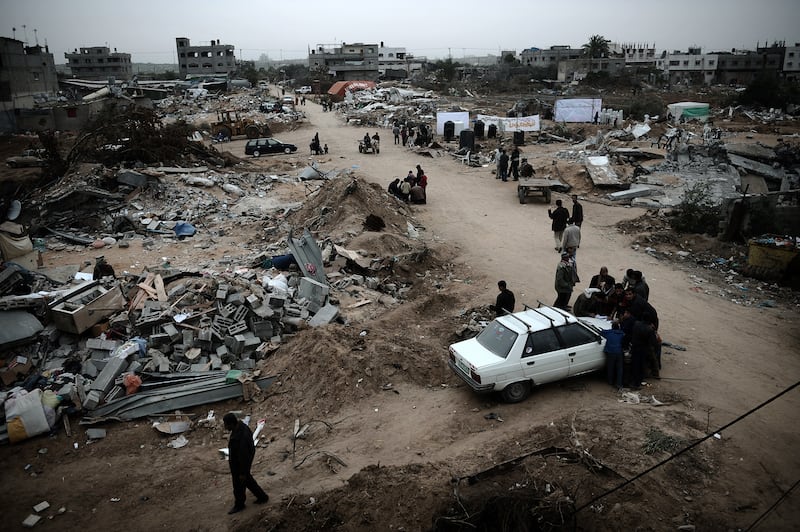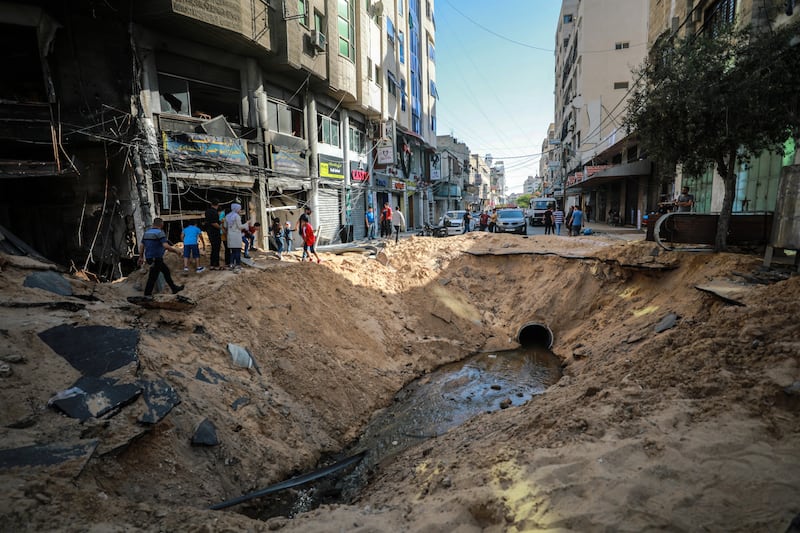The Gaza war marks a turning a point in Palestinian-Israeli violence. For the first time Palestinian paramilitaries have mounted a meticulously planned and brutally executed operation within Israel.
Three other major conflagrations which took place after Hamas seized control of Gaza were launched by Israel with the objective of “mowing the grass”, a strategy for cutting back Hamas’s armed forces by killing fighters and destroying arms and infrastructure. This strategy did not eliminate Hamas but kept its armed wing in check. The aim of Israel’s newly-appointed war cabinet – part of an emergency government which will serve for the duration of the war – is to eliminate Hamas and its military wing.
Hamas became a serious threat when it won the 2006 Palestinian legislative election, defeating the Fatah party. In June 2007 Fatah’s security chief Mohammad Dahlan mounted a failed coup against Hamas in Gaza. Fatah’s forces were expelled from the strip, and Hamas established a separate administration. This divided Palestinians between Gaza and the West Bank, where Fatah dominates the Palestinian Authority. The Hamas administration presented a challenge to the western-backed Palestinian Authority and to Israel, which imposed a tight siege and blockade of Gaza.

In response to rocket fire from Hamas, Israel staged Operation Cast Lead between December 27th, 2008, and January 18th, 2009. Israel bombed and shelled military and police targets, administrative buildings and residential areas in Gaza city, Khan Yunis and Rafah, before launching a ground assault. Hamas replied by firing homemade rockets. The conflict killed between 1,166 and 1,417 Palestinians and 13 Israelis.
RM Block
Israel staged an operation called Protective Edge between July 8th-August 26th, 2014, following rising tensions in the West Bank. In May two Palestinians were killed during anti-occupation protests and in June two Hamas supporters kidnapped and killed three Israeli teenagers. When Hamas fired rockets into Israel after an explosion killed Hamas militants in a tunnel in Gaza, Israel replied with bombing and shelling. In mid-July it carried out a ground operation. The Palestinian death toll ranged between 2,125 and 2,310, while 67 Israeli soldiers and at least five Israeli civilians were killed.

Israel next attacked Gaza between May 10th-21st, 2021, again in response to the firing of rockets from Gaza. The attacks from Gaza were prompted by Israeli evictions of Palestinians from their homes in East Jerusalem and by clashes during Israeli military and settler incursions into al-Aqsa mosque compound, which is revered by Jews as Temple Mount, the site of their ancient temple which was destroyed by the Romans in 70 AD. Israel responded to the rocket fire with bombing and shelling but did not send troops into Gaza. The conflict killed 256 Palestinians and 13 Israelis.
During these conflicts Israel’s heavily armed regular air, land and sea forces faced Palestinian fighters who used smuggled guns and homemade rockets. Violence was contained within Gaza, although some Hamas rockets were not intercepted by the Iron Dome defence system and struck Israel.
Before the current conflict Hamas maintained secrecy and misled Israeli Intelligence, before mounting a surprise invasion of southern Israel, hitting military targets and killing civilians over several days. This offensive initiated war rather than warfare. Israelis have suffered 1,400 mainly civilian fatalities and considerable damage. More than twice as many Palestinians, mostly civilians, have died and Gaza has been devastated.
Nevertheless, disproportionality between the sides has shrunk, making the outcome even more unstable and potentially dangerous unless the 75-year-old conflict is resolved through political negotiations.















